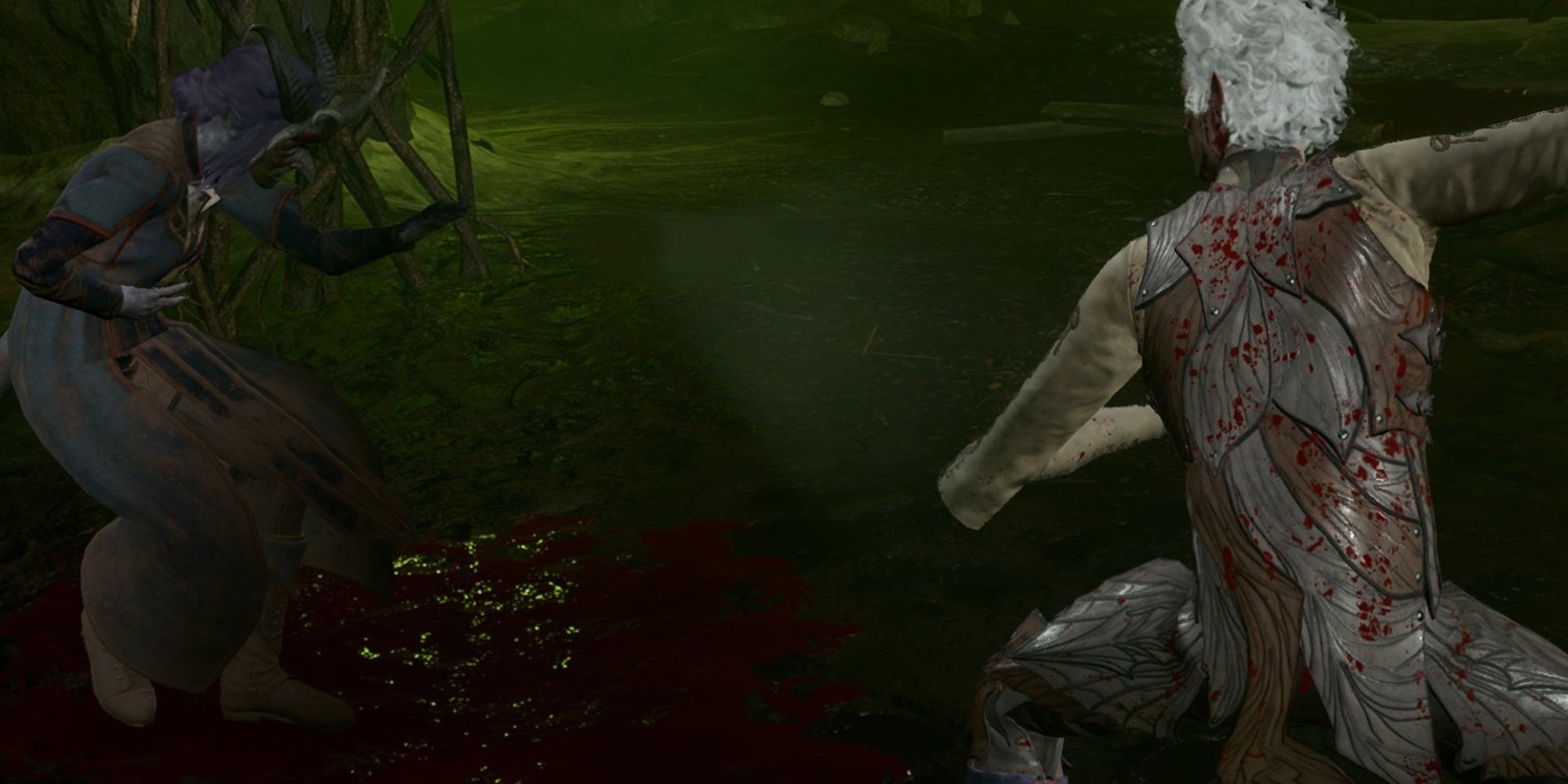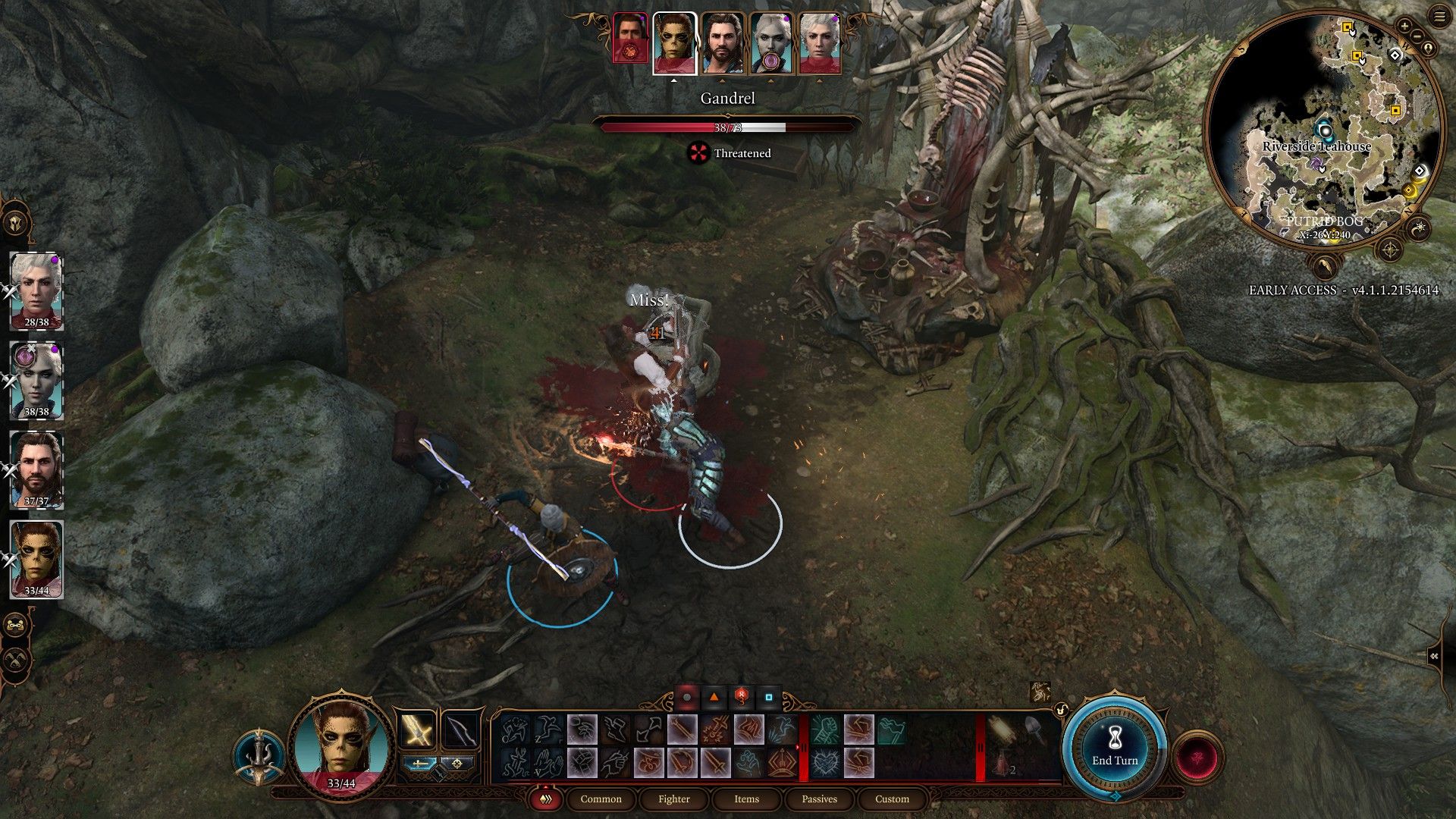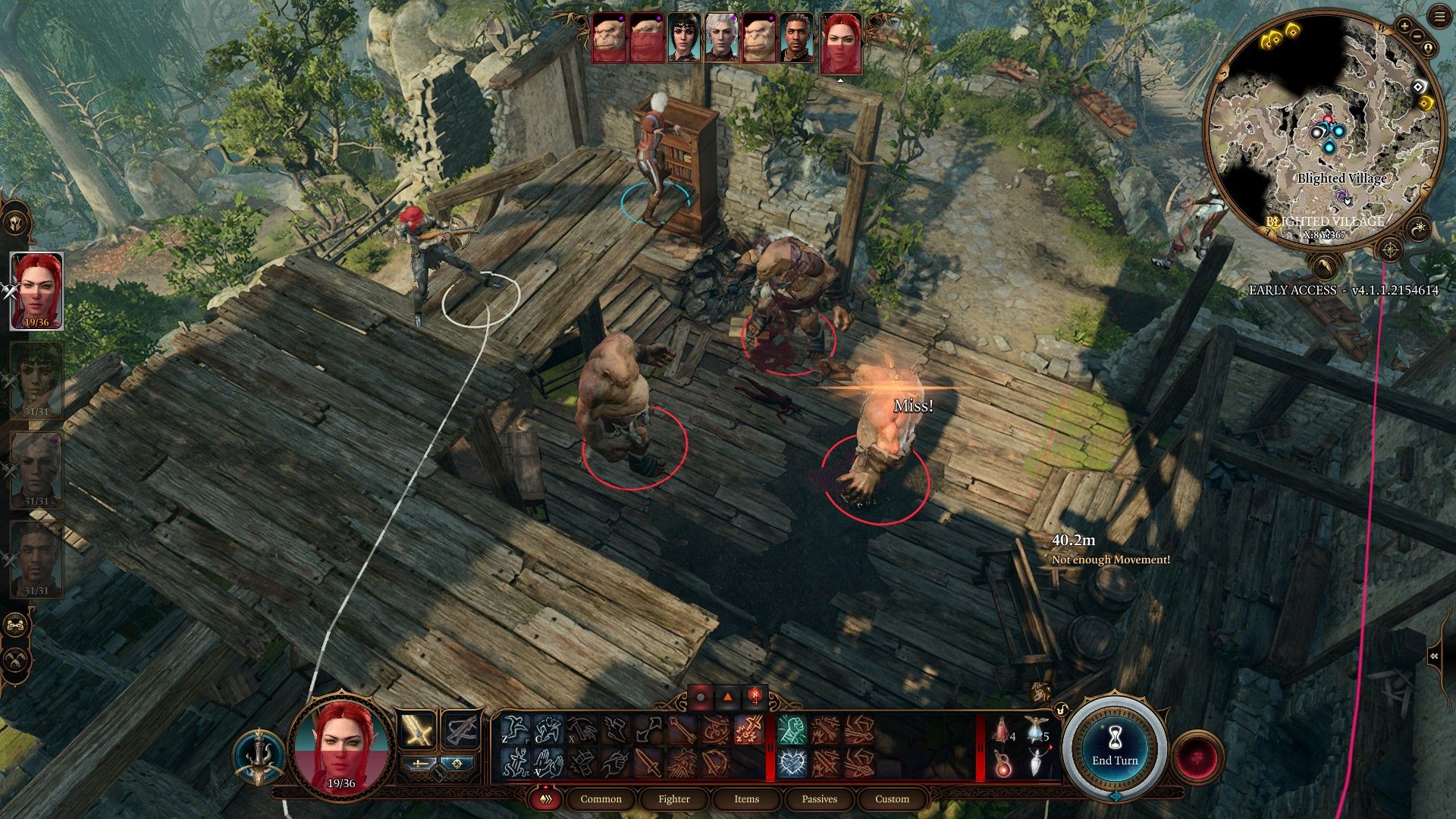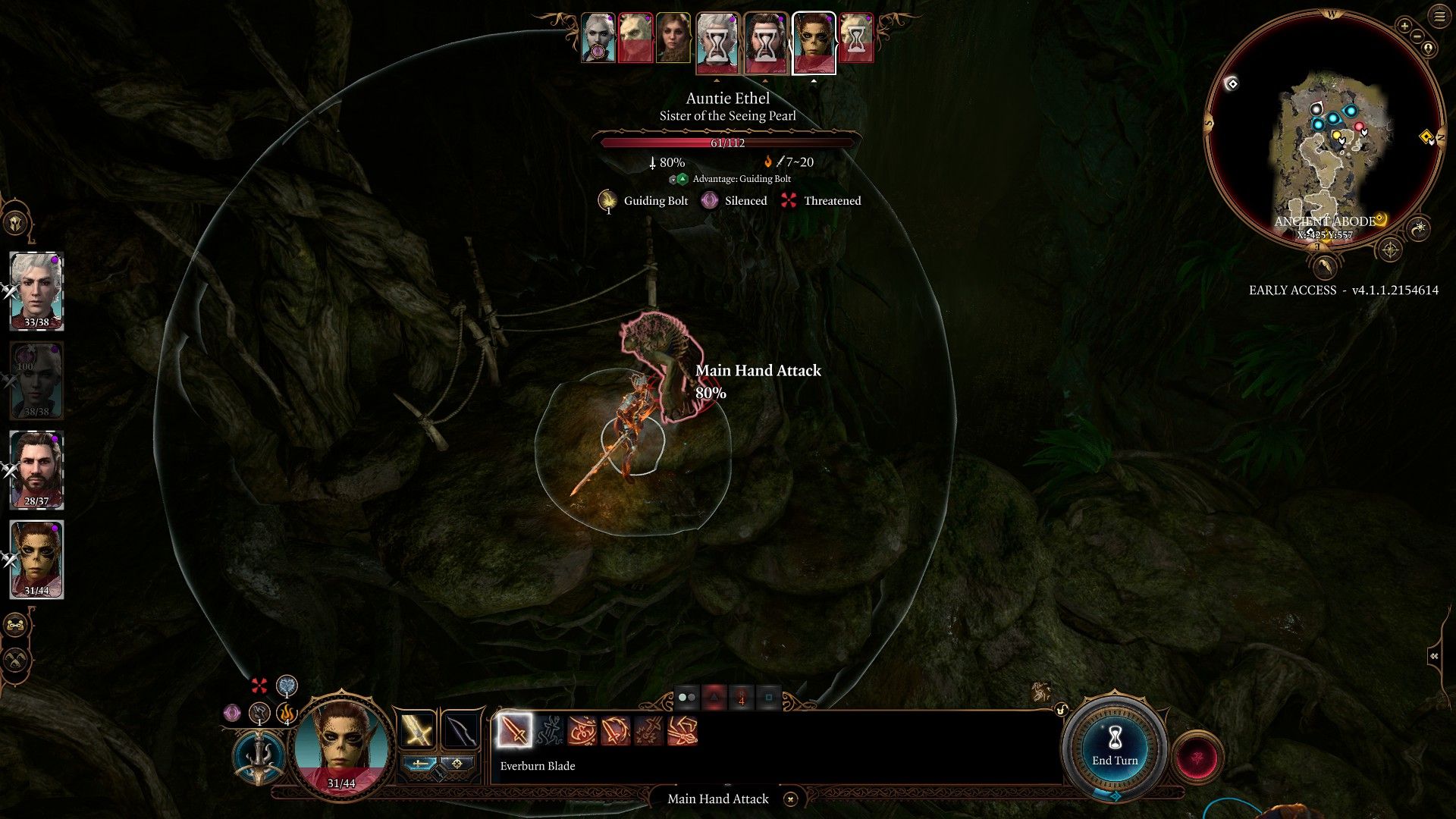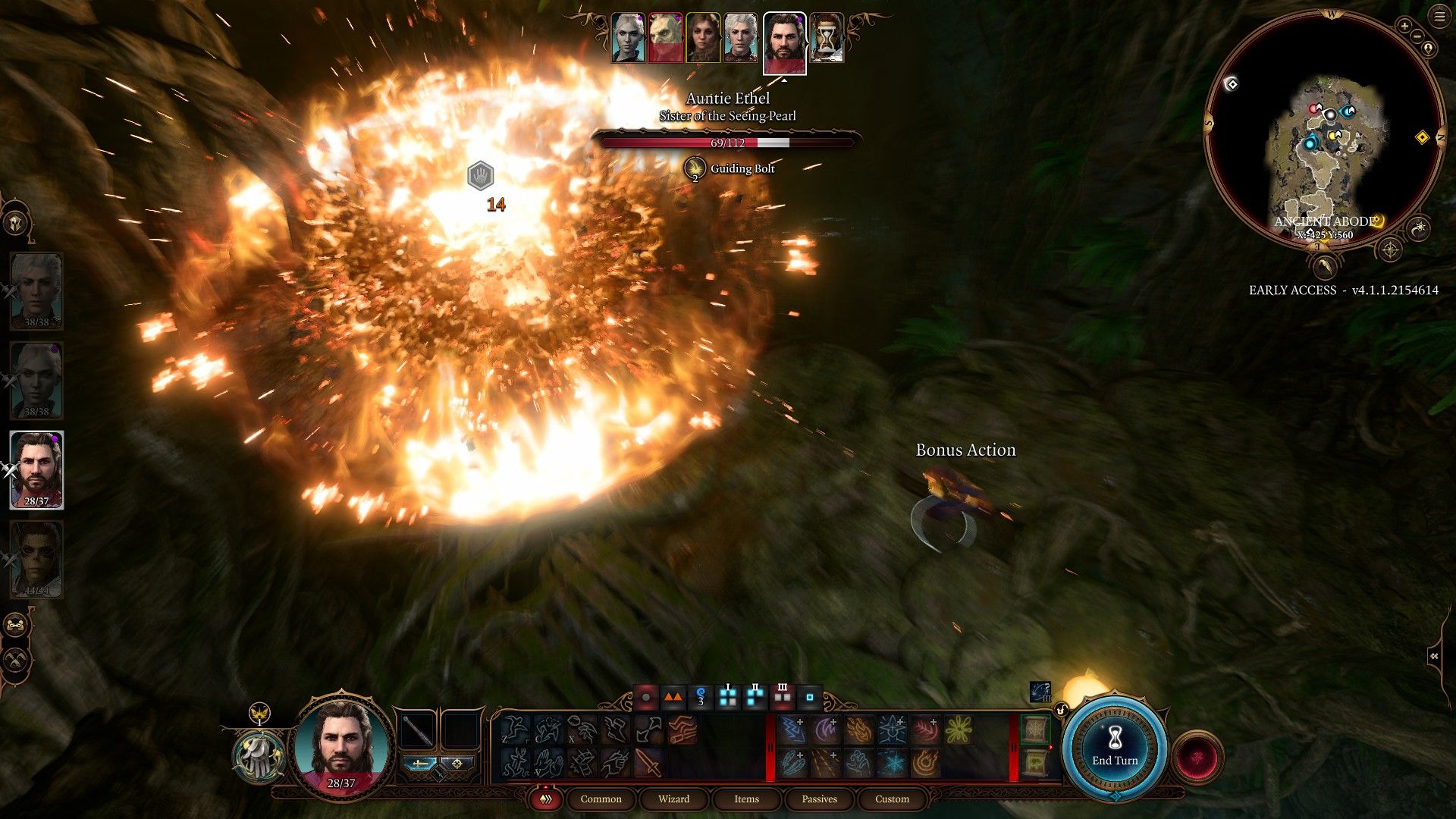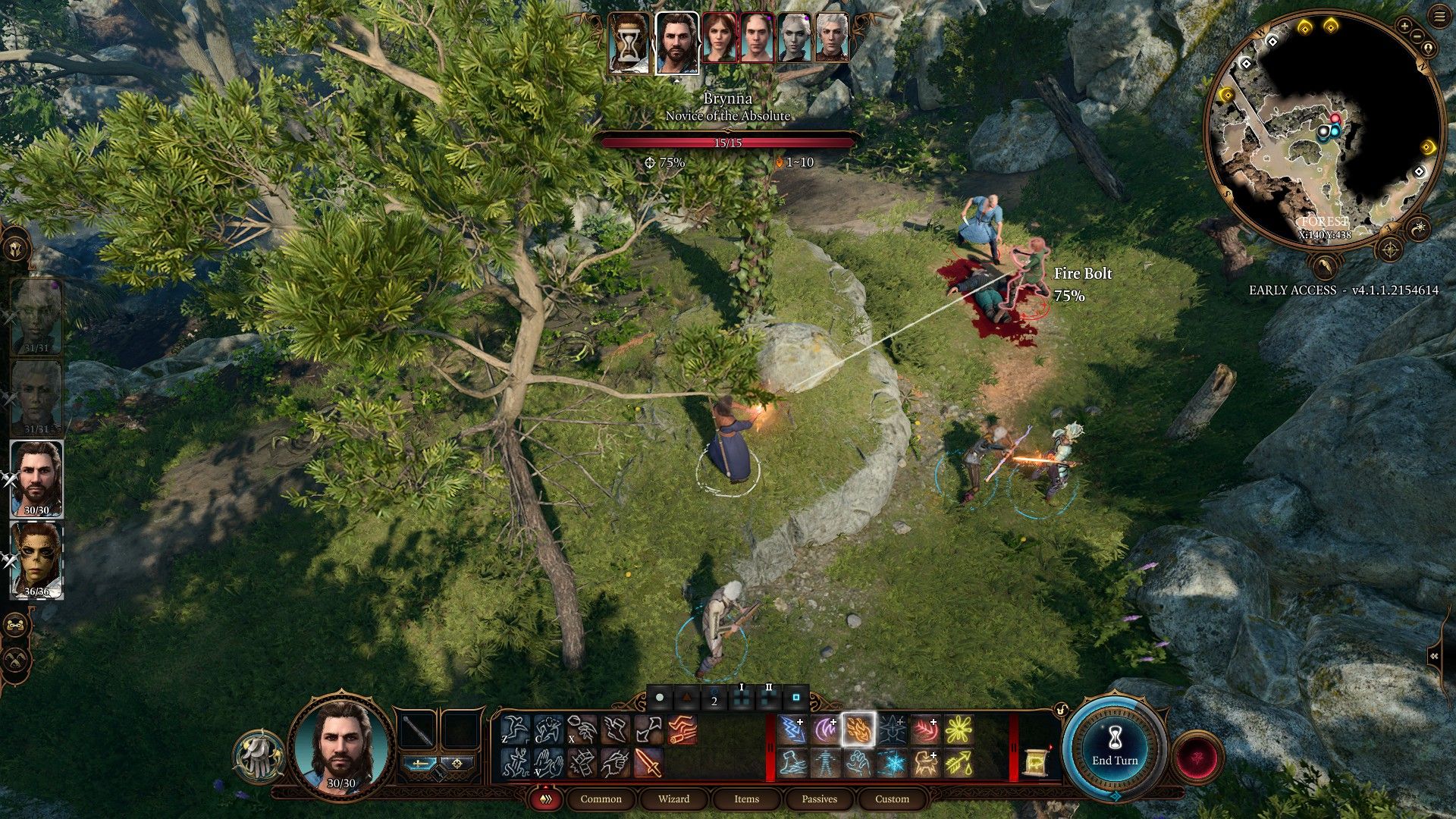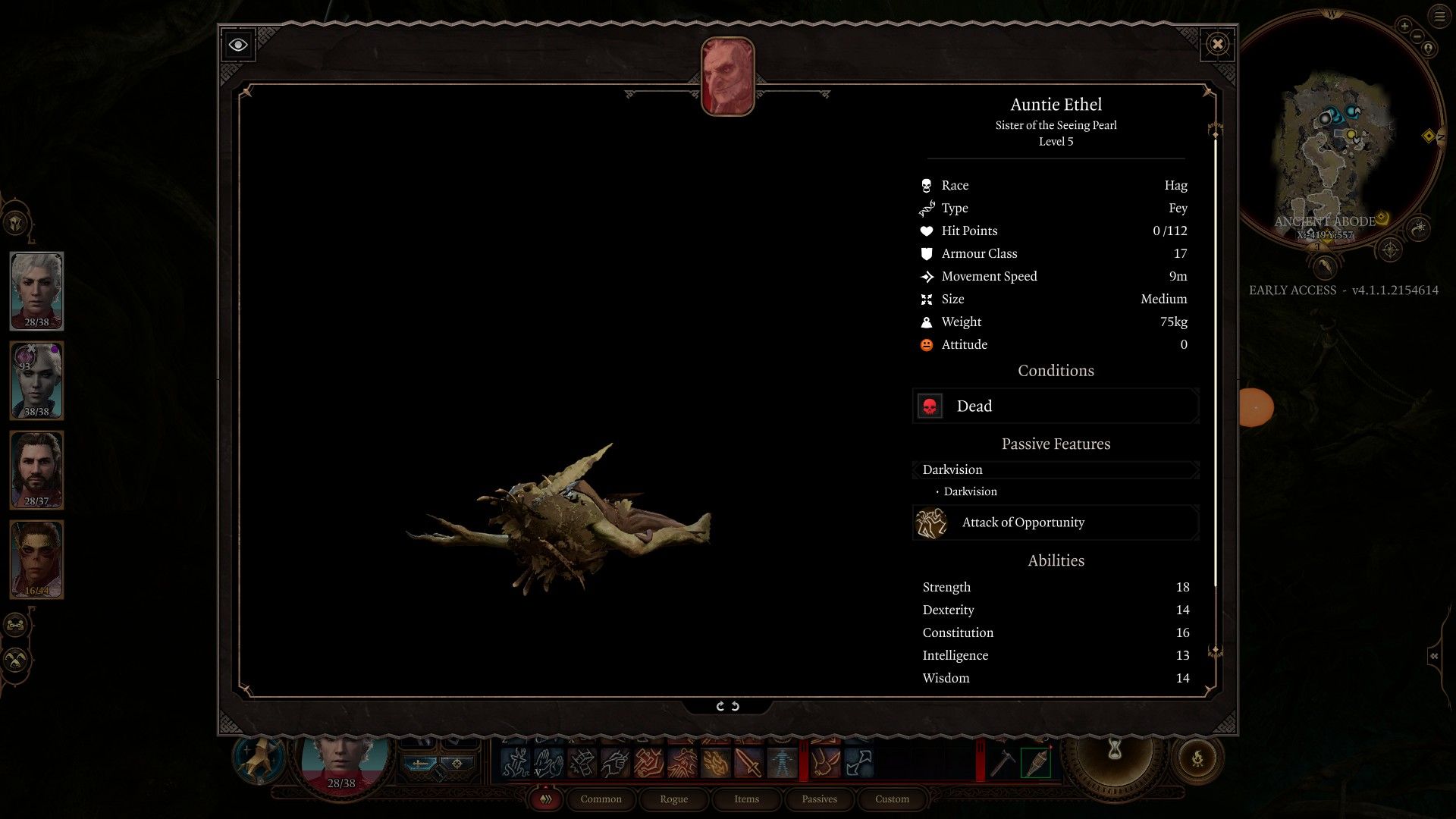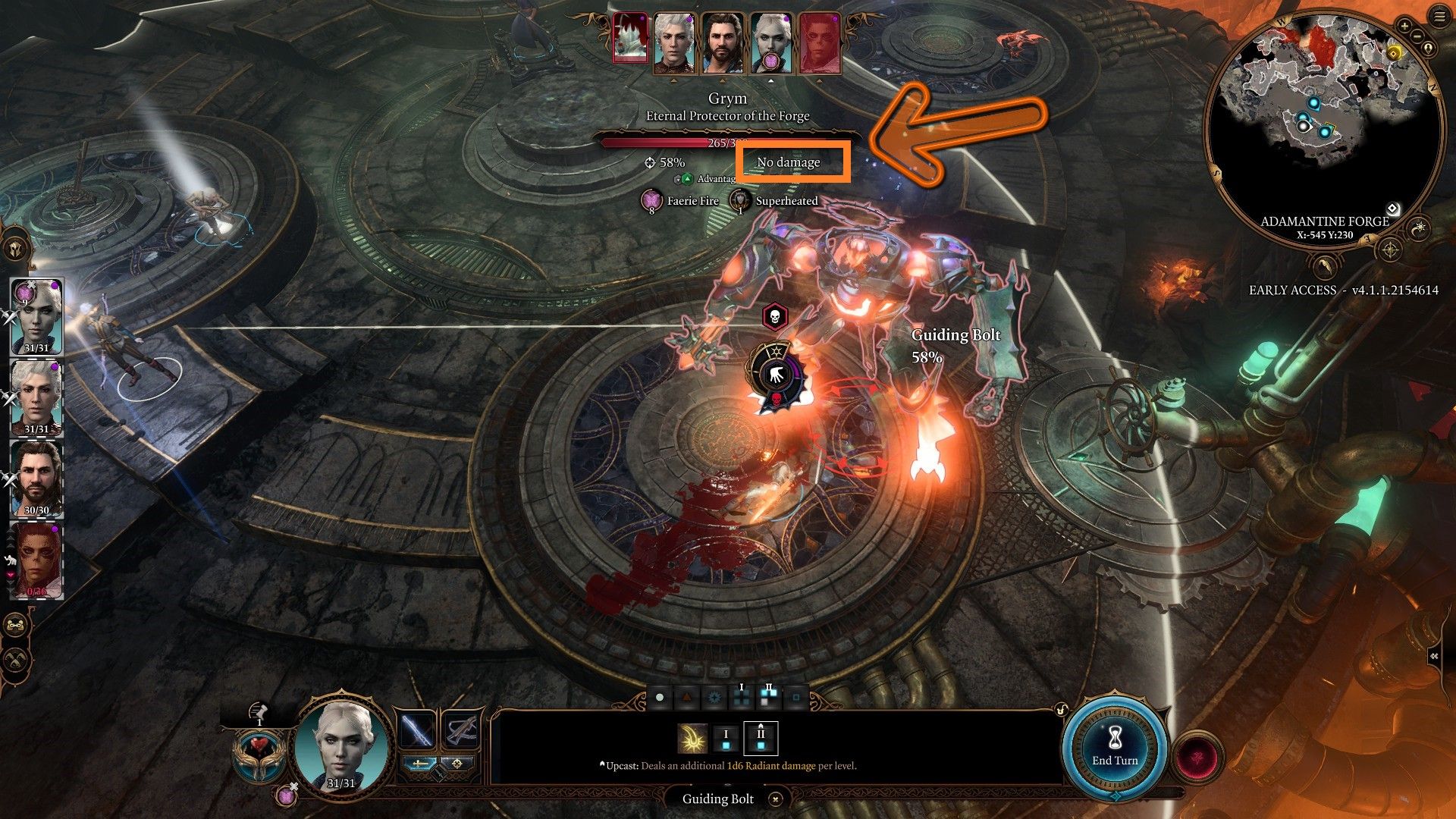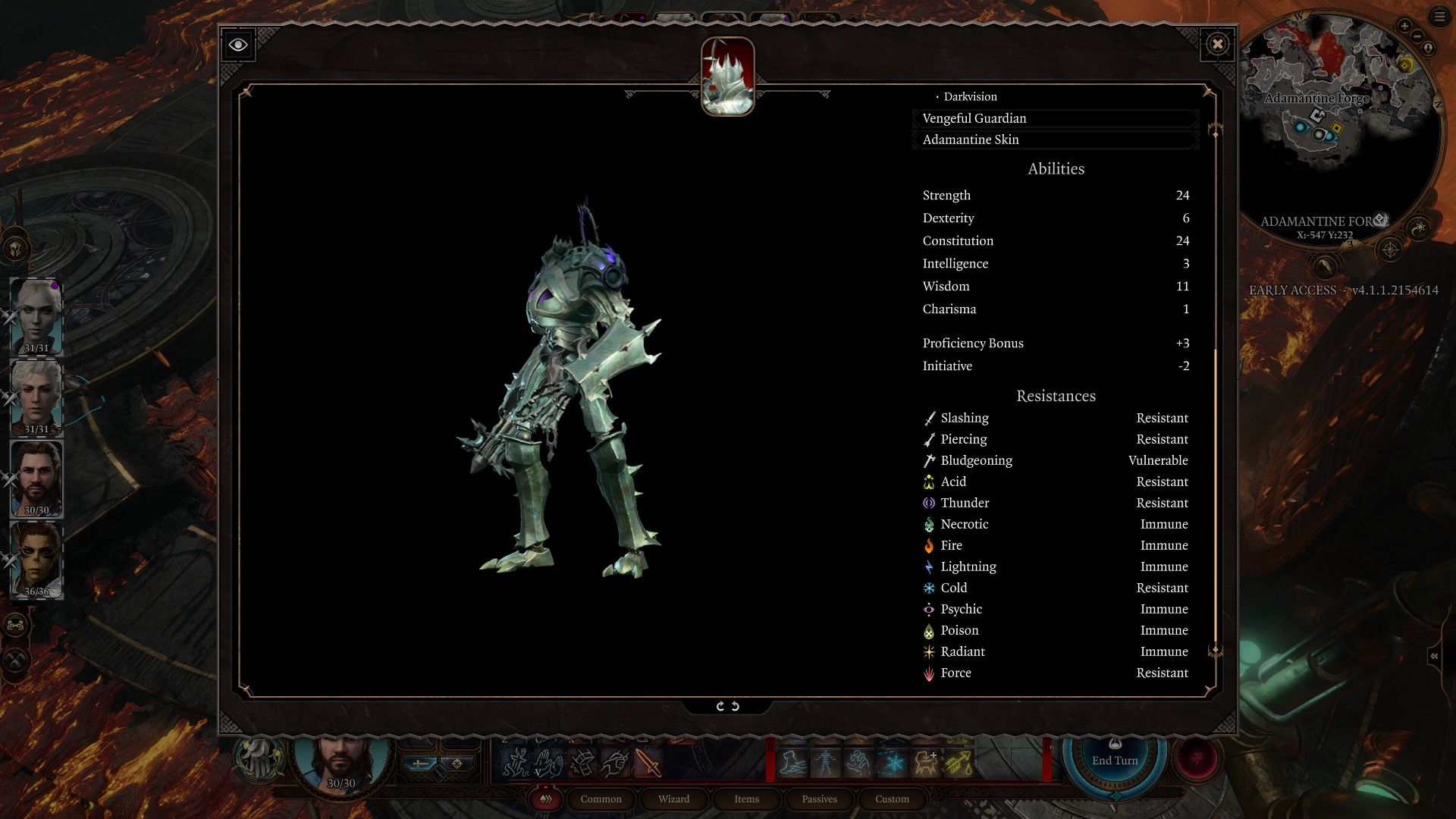Baldur's Gate 3 combat can sometimes be a little tricky to understand. With all the math and formulas to follow, sometimes it's just better to swing and let the system do the math for you. But knowing the ins-and-outs of the battle mechanics will set you up for even greater success in the future.
Knowing how the hit rate and damage is calculated, you'll be better able to anticipate your likelihood of success in certain combat situations before getting involved. You'll also know how to increase your hit rate and damage output. Nifty, right? The more you know, the more of an edge you'll have.
Making Attacks: Calculating Hit And Damage
In general, there are two considerations to be made when making any attack roll:
- Does it hit?
- If so, how much damage does it deal?
Attack rolls can be done from one attacker against any target - living or inanimate. It takes one standard Action to make an attack unless otherwise specified.
The standard rule of attacks is that hitting requires you to follow this formula:
Success: (Total sum of: 1d20 + any modifiers) >= Opponent's Armor Class
Failure: (Total sum of: 1d20 + any modifiers) < Opponent's Armor Class
If you hit, you deal damage.
The types of modifiers you use in rolling to hit and the type of damage you deal depends on the method of attack you're using.
Weapon Attacks
For attacks made with weapons, the chance to hit a creature is calculated by:
1d20 + Weapon-specific ability modifier + any proficiency bonus + any related feat bonuses = chance to hit
When speaking of weapon-specific modifiers, we mean that certain types of weapons use certain stats. For example, a Rapier with the Finesse property is a Dexterity-based weapon. This means that you use your Dexterity modifier when wielding it.
Ranged weapons and Finesse or Versatile weapons use the Dexterity stat, and most Martial weapons use the Strength stat.
Weapons wielded by someone who has proficiency in them gets to use the character's proficiency bonus in calculating their chance to hit. If they are not proficient with the weapon, they do not get a bonus and can also not properly use the weapon's unique traits.
Feat-specific bonuses may also be calculated in the total number.
If the total number matches or exceeds the target's Armor Class (AC), they successfully hit and can roll for damage.
Damage is calculated by:
Weapon's static damage + weapon-specific ability modifier + any related feat bonuses = damage
Using the example above, a Rapier deals base damage of 1d8. Roll 1d8 plus your Dexterity modifier to calculate the damage you deal.
Magic Attacks
Magic attacks are a tad trickier. Every spell's description will tell you what you need, but there are generally two categories of spell attacks:
- Spells that use attack rolls.
- Spells that use Saving Throws.
In the second category, hitting is as simple as casting the spell and having the target roll to try and save against your Spell Save Difficulty Class (DC). If they meet or beat it, then they can take either half or no damage, depending on the spell's description.
The first category works much like hitting with a weapon attack. You calculate your chance to hit by:
1d20 + proficiency bonus + Spellcasting Modifier + any feat-related modifiers = chance to hit
If you are a Wizard, your spellcasting modifier is Intelligence. This means that you will add your Intelligence modifier to your proficiency bonus and then add that number to a d20.
Vulnerabilities, Resistances, And Immunities
Although attacking is already complicated in numbers, there is an additional factor to consider when making attacks: a target's resistance or vulnerability to types of damage.
There are multiple types of damage:
- Physical (Non-magical)
- Bludgeoning
- Slashing
- Piercing
- Physical (Magical)
- Acid
- Thunder
- Necrotic
- Fire
- Lightning
- Cold
- Psychic
- Poison
- Radiant
- Force
When dealing these types of damages, a creature can be affected in one of four ways:
- Vulnerable - Take x2 damage from that type
- Normal - Roll normally
- Resistant - Take 1/2 damage from that type
- Immune - Take no damage from that type
If a weapon or spell does multiple types of damage, only the type of damage that is affected by the target's vulnerabilities and resistances will see any change.
In an example of Vulnerability, the Everburn Blade deals 2d6 Slashing damage + 1d4 Fire damage. Pretend it rolls 8 Slashing damage and 4 Fire damage. It hits a creature that is vulnerable to Fire damage. Therefore, the sword now deals 8 Slashing damage and 8 Fire damage.
In another example for Immunity, the Grym fight at the Adamantine Forge uses several immunities depending on whether it has been heated by the lava. Pretend you use Ray of Frost on Grym and deal 4 damage. If you hit him while he is heated by the lava, he will resist the Cold damage and take 2 damage instead. If you hit him while he is not heated, Ray of Frost will deal 0 damage.
In essence, keeping track of the weaknesses and strengths of enemies will play a big part in the kinds of damage you can do in Baldur's Gate 3. As you go out with this new information, we recommend you keep in mind the handy "Examine" tool you can use by right-clicking on any character to ensure you can deal the most amount of damage.

